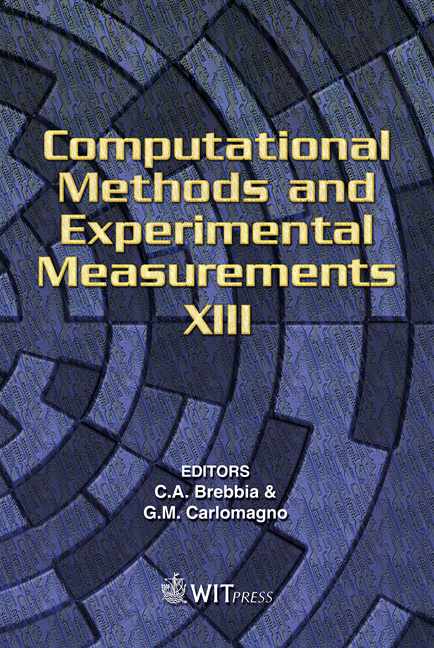A Model Of Spur Gears Supported By Ball Bearings
Price
Free (open access)
Transaction
Volume
46
Pages
12
Published
2007
Size
837 kb
Paper DOI
10.2495/CMEM070701
Copyright
WIT Press
Author(s)
F. Viadero, A. Fernandez del Rincon, R. Sancibrian, P. Garcia Fernandez & A. de Juan
Abstract
In this work a model of a 2D spur gear transmission is described for analysis of tooth contact forces and deformations. Assuming the position of each wheel is known, the contact points between gears are obtained taking into account the geometric description of the tooth profiles including profile errors and relief modifications. Then the deformation in each contact point is separated into a global and a local term combining a finite element model and an analytical formulation originating from Hertzian contact theory. The proposed procedure does not need new element meshing for each angular position thus obtaining an important computational advantage. Afterwards, a non-linear system of equations is obtained and solved for each gear position in order to calculate the meshing contact forces. The model can include the possibility of bidirectional single-flank or double-flank action as well as friction forces in the out-of-action line. Once the contact forces are known, it is possible to use the procedure in the calculation of loaded transmission error and meshing stiffness. Furthermore, each gear is supported by ball bearings that are included in the model taking into account their clearance and their variable stiffness due to the change in the number of balls supporting the load. This variable bearing compliance modifies the gear centre distance and as a consequence the transmission error during a turn. Using this methodology a numerical example is presented where the static behaviour of a spur gear transmission is described and analysed. Special attention is focused on the influence of load level on the final loaded transmission error. Keywords: gear, transmission error, bearings, tooth contact, load ratio.
Keywords
gear, transmission error, bearings, tooth contact, load ratio.





